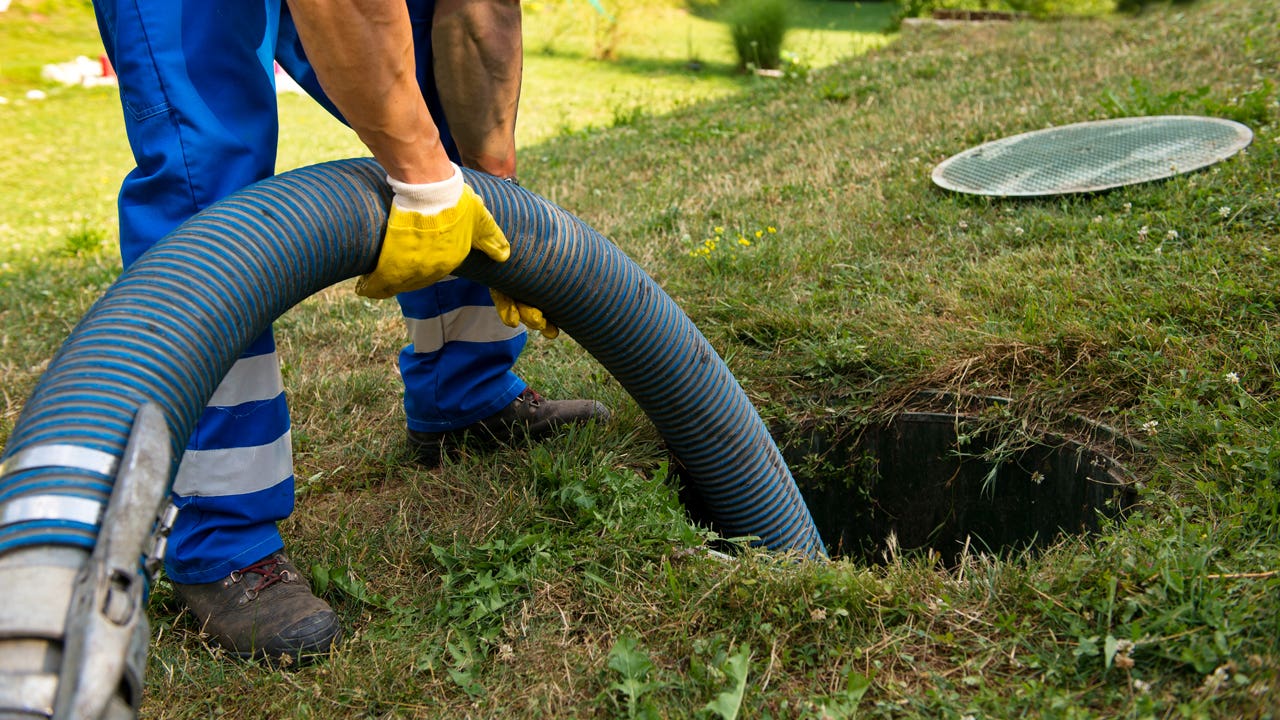Buying a house with a septic tank: Everything you need to know

If you’re itching to move from the city to a quieter location, you aren’t alone. Almost half of Americans would rather live in a town or rural setting than a city, according to a 2021 Gallup study. But house-hunting in a rural spot brings with it issues that you don’t need to think about in a city — for example, whether the property is connected to the local sewer system or relies on a septic tank.
In a nutshell, a house septic tank is a way to treat and dispose of wastewater from a property that is not hooked up to a municipal collection system. Having one on-site has its benefits, but it can be intimidating. Before you buy a house with a septic tank, here’s what you should know.
What is a septic tank, and how does it work?
It’s common for houses in rural or off-the-grid areas to have a septic tank, which is a mechanism that’s used to collect and treat wastewater from your home. If your home has a septic tank, it means that your wastewater gets treated on your property, rather than at a municipal treatment plant, which is more common in cities and suburbs.
Septic tanks collect all sorts of wastewater that comes from your household, not just toilet waste. Anything that goes down the drain, including water from your washing machine and dishwasher, food scraps in the garbage disposal and household cleaning products also end up in the septic tank.
The tank itself is buried deep underground somewhere on your property and is completely watertight. Most septic tanks are constructed from concrete or fiberglass. The size of the tank depends on the size of your home, but for an average three-bedroom house, the minimum size for a septic tank would be around 1,000 to 2,000 gallons.
When you run the dishwasher or flush the toilet, your household wastewater flows through an opening in the tank, called the inlet, where the water collects. Heavy solids settle in the bottom of the tank (called sludge), whereas lighter solids (called scum) float to the top.
Once the solids have been separated, the water that remains in the tank, called the effluent, gets discharged from the tank and flows through a series of pipes into a leach field (also called a drainfield). The soil treats and disperses the water, which eventually gets discharged into the existing groundwater.
Septic tanks and wells
One common misconception about septic tanks is that they are somehow connected to your drinking water source, particularly if you have a well (as many rural homes do). In reality, well water and septic are two separate systems. Septic systems collect and treat wastewater, whereas wells pump groundwater into your home for everyday use.
Septic tank inspection and maintenance
Septic tanks can be very reliable, but they need to be professionally maintained in order to operate properly. And they must be cleaned by a professional at regular intervals, through a process called pumping.
During the cleaning, a technician removes the sludge and scum from the tank through a large hose. They might also inspect the tank for signs of failure, leaks or clogs. According to the EPA, a house septic tank should be pumped every three to five years. Smaller tanks may need to be pumped more frequently, though, and some types need to be cleaned annually. The cost of having your septic tank pumped can be anywhere from $250 to $500 per cleaning.
If you’re thinking about buying a home with a septic system, it’s important to know the rules and regulations in your state. For example, some states require the septic system to be inspected before the property title can be transferred. Your mortgage lender might also request a septic inspection, as most standard home inspections don’t include the septic system.
In addition, you’ll need to learn about the local building codes for septic systems in your area. There could be town- or county-specific requirements around septic tank inspections and maintenance. If the septic system does not meet the code — for example, if the tank is too close to a well — you might need to reinstall it elsewhere.
Pros and cons of septic tanks
Before you buy a house with a septic tank, consider the pros and cons. Here are some things to think about:
Pros
- More affordable: A septic system saves you from having to pay for municipal sewage service, and can also save you money on property taxes as well.
- Better for the environment: Septic systems are environmentally friendly.
- Long-lasting: Properly maintained septic systems can last 20 to 30 years, or sometimes more.
Cons
- Needs regular maintenance: Septic tanks need regular pumping and maintenance, typically every few years, which can cost up to $500 per cleaning. Failure to maintain them properly can get messy — and expensive.
- Septic lines can get clogged: When you live in a home with a septic tank, you have to be very careful of what you flush or put down the drain. If the lines get clogged and stop draining properly, sewage could back up into your drains.
- Potential for water contamination: Septic tanks that are clogged or are not functioning properly can potentially contaminate your well water.
Bottom line
Home septic tanks aren’t necessarily something to be afraid of when you’re house hunting, and in rural areas they might be a necessity. But they need routine maintenance to avoid costly — and messy — problems. Before purchasing a home with a septic system, it’s smart to have it inspected to make sure there are no signs of trouble.
Why we ask for feedback Your feedback helps us improve our content and services. It takes less than a minute to complete.
Your responses are anonymous and will only be used for improving our website.
You may also like

How to sell a house by owner in Missouri

What is housing discrimination?

How to buy a house for sale by owner



